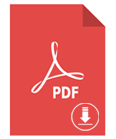Psychoacoustic: It Begins in Physics and Can Migrate to Psychology
Yordanis Arias Barthelemi1* and Clara Ofelia Suárez Rodríguez2
1Academic polyclinic Dr. Porfirio Valiente Bravo. Ricardo Riso avenue. Songo-La Maya municipality. Postal zone 94180. Santiago de Cuba. Cuba
2Universidad de Oriente. Patricio Lumumba avenue. Postal Zone 90500. Santiago de Cuba City. Cuba
Submission: January 27, 2023; Published: February 01, 2023
*Corresponding author: Arias Barthelemi, Master in psychosocial intervention. Health Psychologist, Psychotherapist and university professor, Cuba
How to cite this article: Yordanis A B, Clara O S R. Psychoacoustic: It Begins in Physics and Can Migrate to Psychology. Psychol Behav Sci Int J. 2023; 20(2): 556034. DOI: 10.19080/PBSIJ.2023.20.556033.
Abstract
The aim of this longitudinal multicenter randomized controlled trial with intention-to-treat analysis was to evaluate the effectiveness, efficacy, and safety of the Acute Stress Syndrome Stabilization Individual (ASSYST-I) treatment intervention in reducing posttraumatic stress disorder (PTSD), depression, and anxiety symptoms in adult females with adverse childhood experiences. A total of 43 adult females met the inclusion criteria and participated in the study. Participants’ ages ranged from 18 to 80 years old (M =33.74 years). A two-arm randomized controlled trial (RCT) design was applied. PTSD, anxiety, and depression symptoms were measured in four-time points for all participants in the study. Results showed that the ASSYST-I treatment intervention had a significant effect in the different comparisons carried out through ANOVA for repeated measurements for these variables.
In regard to posttraumatic stress disorder (PTSD), results showed that the intervention had a significant effect for time on this variable with a large effect size (F (3,123) = 196.07 p <.000, η2 = .827), and a significant interaction between time and group, (F (3, 123) = 25.67, p <.000, η2 = .385). A significant effect for group was also found (F (1, 41 = 9.17, p<.005, η2 = .183). The significant differences of the means over time and comparing the groups are presented including the size effect.
The statistical analysis and the clinical reports confirmed that the ASSYST-I is an effective, safe, and efficient treatment intervention to reduce PTSD, anxiety, and depression symptoms caused by pathogenic memories produced by adverse childhood experiences in the adult female general population. No adverse effects or events were reported by the participants during the treatment procedure administration or at sixty-day follow-up. None of the participants showed clinically significant worsening/exacerbation of symptoms after treatment. All participants received the intervention treatment according to the research design, fulfilling our ethical criteria.
Keywords: Acute Stress Syndrome Stabilization; ASSYST; Posttraumatic stress disorder (PTSD); Anxiety; Depression; Adverse Childhood Experiences
Introduction
The Hidden Edge of Psychoacoustics
When debates about psychoacoustics [1-6] arise in the scientific community, there is always a tendency to associate it with the physical sciences, this happens because the other side of the coin has been studied to a lesser extent which is from the psychological sciences; It is necessary to clarify that this term is born in physics and for Núñez [7]: it is the psychological and/or psychopathological response to a physical-sound stimulus, where the brain analyzes the different qualities of sound and transforms it into a message with physical-mental reactions. This emerging specialty (could be an epistemic bridge between the physical and psychological sciences) studies the characteristics of auditory perception related to cognitive and affective processes in human beings, rather the impact of sound on physioaffective processes, reflecting on the moods of the subjects after listening to a melody [8]; or on the contrary, when perceiving a noise, the physiopsychological responses are corroborated by vomiting, illusion, anxiety and temporary deafness in said individuals.
The Effects on The Human Organism
Bodily sensations or psychosomatic responses are evident after listening to the “Lord of the Rings” soundtrack (written by Tolkien); the drums rumble when a battle is coming or the violins are calm when it is a love scene, the repercussion of sounds in the psyche of human beings is interesting; the sound vibrations emitted by a musical instrument shape the moods of any individual, marking a message or psychological meaning [9] similar to that of language, according to Cross [10]: Music can have a social efficacy of some order similar to that of language. Where music and language are similar in: Both present complex temporal sequences that can exhibit recursion depend on organizational models [11], seem to have a degree of reflected generativity, share some neurological substrates, and both language and music evolved at from the same communicative capacity [12,13].
Historians say that the composer and instrumentalist Franz Ritter von Liszt caused ecstasy when he played his friend Fryderyk Franciszek Chopin’s nocturnes, and some ladies from European high society after bathing with his melodies, gave them expensive gifts so that the father of romanticism would demonstrate his virtuosity in his palaces; It has been shown that if a baby is irritated, you put an instrument with an adequate decibel so that they tend to appear calm; or if you intend to cause discomfort (counterproductive to human development) in the human organism, raise the decibels beyond the permissive threshold and you will see a poly-morbidity.
Psychoacoustics Understood from Psychology
Based on all of the above, several questions arise: ¿Could psychoacoustics shed light on a new specialty within psychology? It is evident that psychology as a science has a network of categories that can provide answers to this branch of physics; or seen from the scientific prism, ¿could physics and psychology be merged generating a new science? Perhaps this theoretical approach would provoke laughter in the scientific community or new followers who reformulate this dialogic; ¿ Can an epistemic platform be provided capable of understanding the essential relationships that emerge from this scientific problem? The reality is simple, the excessive questions of an emerging specialty that comes from physics, and that can be developed in psychology, are evident; or rather it would be the Pandora’s box between the sciences of physics and psychology.
Who would say that one day psychology and physics could be assembled with a well-defined object of study, since it would be the starting point for a profession with its own objective, limits and categories, ready to promote human development; Well, of course, the new generates fear or rejection in prejudiced minds, without even paying attention to the lights that mark the goal. This emerging specialty (merged psychology and physics) would have the object of study: to study the dissimilar psycho-physiological responses of a subject before sound stimuli, and its field: the importance of manipulating decibels in post of human well-being. Based on the previous logical discourse, a question arises: ¿Could psychoacoustics is presented as a healing tool for the ailments of an individual through the manipulation of decibels? It is necessary to recognize that to achieve the above, a multidisciplinary team, instrument and financing are necessary to generate possible human experiments (under the agreements of the Declaration of Helsinki) marking the limits through morality as the central axis.
Conclusion
As a result of the essential relationships that psychoacoustics generates between physics and psychology as sciences, a higher study center made up of a multidisciplinary team (made up of: endocrinologists, psychologists, philosophers, sociologists, sociocultural anthropologists, neurologists and physiologists) is necessary to study the supposed epistemic relationships between these two sciences. From the bibliographical references, the few theoretical contributions that comprise psychoacoustics from psychology are notorious.
Declaration of Conflict
The authors declare that they have no conflicts of interest.
References
- Dowgan TS (2020) Psychoacoustics study Through Mathematical Modeling. Universidade Do Sul De Santa Catarina, Brazil.
- Ruiz QC (2022) Comparative psychoacoustics: Dichotic vs diotic perception. University of the Balearic Islands, Spain.
- Rodríguez A (2005) Basic concepts of Psychoacoustics. Institute of Electrical Engineering IIE, Montevideo,
- Miyara F (2022) Introduction to Psychoacoustics. s/f Analfatecnicos Journal.
- Secure JS (2019) Psychoacoustic Approach to the Perception of Complex Sounds. AV Notes Journal 8: 132-152.
- Zuluaga Al, Velásquez ED (2022) Contribution of Psychoacoustics in the Sound of Advertising Messages in Marketing Strategy. Catholic University of Manizales.
- Núñez RA (2008) What is Psychoacoustics? Psychoacoustics Journal.
- Díaz MC, Sánchez AD (2016) Psychoacoustic analysis of the response of the state of relaxation of the human being to frequency ranges. University of San Buenaventura, Colombia.
- Gonzalez-King FL (2010) The categories of meaning, personal sense and subjective sense in a historical-cultural perspective: a path towards a new definition of subjectivity. Universitas Psychologica Journal 9(1): 241-253.
- Cross I (2010) Music in culture and evolution. Epistemus Journal, Argentine Society for the Cognitive Sciences of Music. Buenos Aires, Argentina 1: 9-19.
- Valdés C (2007) The music that surrounds us. Editorial Adagio, Havana, Cuba.
- Martin RA (2016) World Psychoacoustics: Perception of Music Around the World. Carlos Iii University of Madrid, Spain.
- Segura GJ, Daumal D, Felici C, Cobos S, Pérez SJJ, et al. (2017) Relationships Between Psychoacoustic Perception and Musical Information in Soundscapes. 48th Spanish Congress of Acoustics Iberian Meeting of Acoustics, Spain.






























